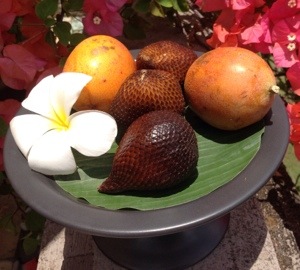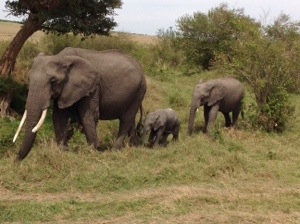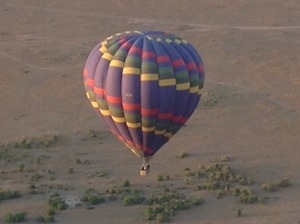
by Loti | Jan 20, 2014 | Animals, Australia, Birds, Endangered Species, Environment, Flowers, Food, Health, Insects, Plants
Adelaide, Australia. Within walking distance of our hotel, I discover a magical botanical garden. Free to the public, in the middle of downtown, this 125 acre oasis includes a rainforest under glass. The forest is housed in the largest single span greenhouse in the Southern Hemisphere (for those of us geography challenged, the Southern Hemisphere is all the land below the equator including Anartica, Australia, most of South America and a third of Africa.) Entering the glass 2 story structure, the air is misty and buzzing with activity, from birds, insects, plants growing and 1,000 misting nozzles. I have always heard how important the rainforest (defined as a dense forest receiving 90-180 inches of annual rainfall) is to our global ecosystem, but I had no idea 50% of the world’s plants and animals live in them. And many of our medicines (some anti cancer and leukemia drugs for starters) come from rainforest plants. Yet we are losing 1-2 (and some biologists estimate the number is closer to 100) animal and plant species a day to extinction primarily from deforestation. Wow! So what can we do? I plan on learning more about the issues and possible solutions by joining a conservation club, visiting rain forests whenever I can and taking steps to recycle and be nice to our Earth. Once a species is gone, we can never get it back. And that sounds so...

by Loti | Jan 2, 2014 | Food, Indonesia
Bali, Indonesia. I am always amazed at how much I don’t know. While I have traveled the world fairly extensively, I always find new fascinating things. Whether 5 miles from home, in my backyard or thousands of miles away, there is a whole world out there if I just pick my head up, look around and be present. Checking into my amazing room in Bali, I couldn’t help but notice a very weird looking fruit on the plate in my room. It was brown with scales and looked like a baby armadillo. Do you eat this thing, I wondered? Well it turns out to be salak or snake fruit. Sadly, I never took time to eat one which was my loss since they are packed with nutrition and are supposed to taste both sweet and acidic. And why would I not try one? Because I got busy with other things, life got in the way, all the cliches I can think of come to mind. So next time, I will stop and experience a new wonder. I may never have the chance again. Taking a photo is great, but tasting and experiencing life is even better! Life’s moments only come once and then they are gone forever. My New Year’s resolution? Being fully...

by Loti | Dec 10, 2013 | Africa, Animals, Keystone Species
Kenya. Hopping into the Range Rover, our guide asked which animal we wanted to see the most. Of course, my answer was elephants. We had seen 2 the day before, but one can never see enough elephants, at least in my book. We drove for a long time observing zebras, wildebeests, warthogs and finally, these three female elephants. And what a treat as the baby was only 3 weeks old! But why didn’t we just go straight to these amazing creatures and just spend all day with them? Surely the guides know where they are all the time? Not really. Elephants are very hard to track and subsequently count, it turns out. You can hardly go door to door conducting a census. And on average, they travel 15 miles a day which is a lot of ground. With conservation efforts largely based on numbers of elephants in a given herd, season to season, it is important to get accurate counts. Even with today’s technology, there are huge swings in estimates (numbers range from 400,000 to 700,000 worldwide). But beginning next year, a team of 46 scientists, led by the organization Elephants Without Borders, will try to count every elephant on the African continent using arial photography. This census information will be critical in helping us protect our elephants, hopefully giving this baby a chance to grow old and wise. Now that is...

by Loti | Nov 24, 2013 | Architecture, Environment, India, Wonder of the World, World heritage Sites
India. Mark Twain, after visiting the Taj Mahal, said the world is split in two parts-those that have seen the beautiful monument and those that have not. I am now one of the lucky ones. Along with approximately 50,000 other visitors a day. Considered by many (including me) to be the most beautiful building in the world, this World Heritage Site is at risk of being damaged by modern pollution. Built in 1632 with no electricity, power tools, trucks or other modern day conveniences, it took 20,000 workers (building and crafting 24 hours a day) over 20 years to build. It completely boggles my mind! Yet in the last century, air pollution has been eating away at the white marble exterior and water pollution threatens the foundations on which the mausoleum is built. Pollution monitoring devices are everywhere, no gas powered vehicles are allowed within a half mile of the Taj Mahal and nearby coal based factories have been closed or converted to natural gas. But alas, all the pollution monitoring devices don’t work without electricity, which was off routinely for 6-10 hours a day due to power outages during our visit. And when the power is out, diesel generators kick on to supply power which just adds to the pollution. Old meets new. With no easy solutions, it is an interesting juxtaposition (my lexicon for the...

by Loti | Nov 12, 2013 | Africa, Animals, Conquering Fear
Kenya. I never dreamed I’d be taking a photo of a hot air balloon from above it, in the air, in another balloon. But here I am at 6:30 one morning in Kenya. High above the hippos and gazelles who didn’t give us a second glance. Ballooning. Something in all my years, I had never done. And now that I have experienced, I will do it again. It was the most awesome floating sensation. Eerily quite in spite of the large blast of propane every now and then. I didn’t realize ballooning is the oldest (dating back to 1783) flight technology which carried people. And who could forget Dorothy missing her balloon ride home to Kansas in the Wizard of Oz. Or Jules Verne’s Around the World in 80 Days (published in 1873) which oddly did not involve a single hot air balloon for the trip (and I thought the whole trip was by balloon!) Balloons have soared to 69,000 feet high (oxygen required), travelled 4,800 miles on a single trip (by a duo including Richard Branson), and in our case flown a couple hundred feet over the Maasai Mara Preserve. What an amazing way to spend a morning. I was just sorry our ride was a short hour. Pure...






